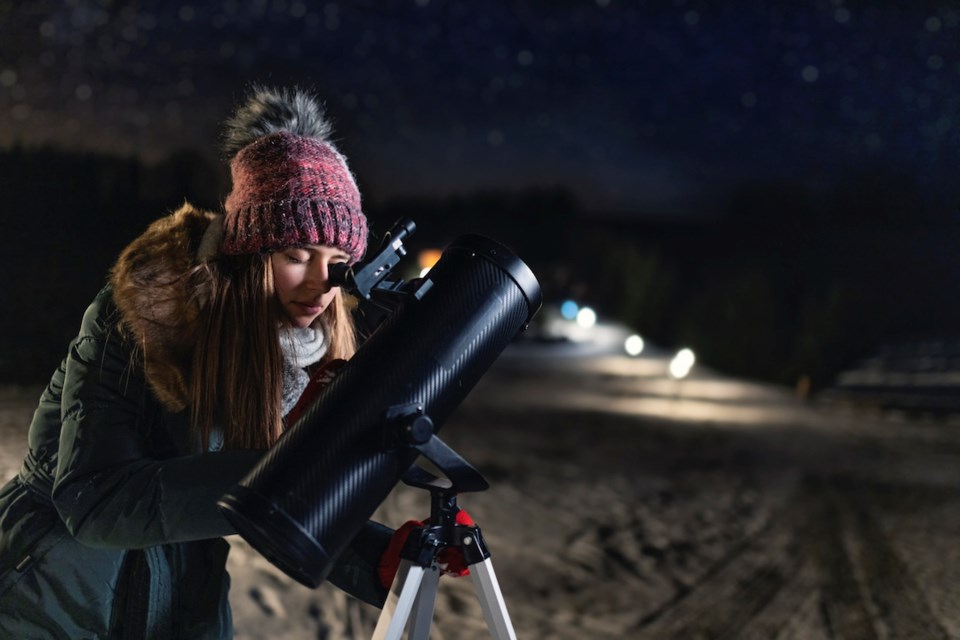Comet C/2024 S1 ATLAS was discovered on Sept. 27 this year from the ATLAS system observatory on Haleakala, Hawaii and appeared to be another of a class of sun-grazing comets called Kreutz comets. These are a class of comets that pass extremely close to the sun at perihelion, close in this case being less than one radius from the surface of the sun. This isn’t SPF 2000 hot, it’s oxy-acetylene torch hot. Accordingly, one characteristic of these comets is that they tend to disintegrate as they pass the sun and 2024 S1 appears (as of Oct. 28) to have done just that. Its velocity just after perihelion was 300 kilometers per second or about 670,000 mph for those of us non-metric dinosaurs who are still around. Yeah, at those speeds physics starts to get non-Newtonian and go relativistic on us. As well, it should confirm that 93 million miles from the sun is a much more comfortable place to live. As of Oct. 28, the spaceweather.com website had a good little movie of the comet’s approach taken from the SOHO satellite observing the sun.
Comet C/2023 A3 Tsuchinshan-ATLAS is fading as it climbs north and east away from the sun from our vantage point after sunset. I caught it three times after perihelion, twice naked eye and once with binocs and in the brief intervals between the clouds. Not as splashy as NEOWISE in Summer 2020 but still neat to see.
As winter approaches, two things happen: we switch back to Standard Time (Nov. 3) and we’re beginning to see the brightest stars in the sky again, this time joined by Jupiter and Mars. After midnight Pacific Standard Time, all of Orion is above the horizon in the ESE. By 01:00, Sirius in Canis Major is just rising below Orion. It’s the brightest star in our sky, mainly because it’s close – only 8.6 ly (light years) from us. The other stars in Orion are much more luminous but roughly one hundred times farther away.
The easy way to find all the stars around Orion is to follow the line of the Belt stars down and to the left about twenty degrees (twice the width of your fist at arms-length) to Sirius. From there go about the same distance left and up a bit to the next bright star – Procyon. It’s in Canis Minor (the Little Dogs) which is strange because procyon lotor is the specific name for a raccoon. According to Wikipedia, procyon means “before the dog” and lotor means “a washer;” it helps me remember the name anyway.
From Procyon, going about the same distance clockwise around Orion would take you to the two stars in Gemini: Pollux and Castor. From there you can continue a bit farther to Capella, the bright star in Bootes. The names get easier if you remember that Pollux (below) is closest to Procyon and Castor (above) is closest to Capella. Right now, however, that whole layout gets a little messy because instead of two stars close to each other in Gemini, there are three. Sort of – there’s a bright one below the pair and it’s pinkish. That’s because it’s not a star but the planet Mars. We’re slowly catching up to it in our orbit, and in January 2025, there’s a very close pass by the Moon as well as its closest approach to Earth. Mark your calendars, folks.
The other planet hanging around Orion is pretty obvious; the brightest object up there is Jupiter, directly north of Orion. It’s moving slowly retrograde, east to west, as we pass it – it’s at opposition Dec. 7 when we pass directly between it and the sun. It’s also at its closest to Earth then which means the best viewing of its moons.
Keep checking the site www.spaceweather.com for a daily update on the T Corona Borealis nova expected in the next few months. That site is also an excellent source for info on solar flares, coronal mass ejections and the likelihood of aurorae we might see.
As a matter of interest, this article marks the fifth anniversary of my writing this column for the Coast Reporter. The nice thing is that neat stuff keeps happening in our skies and I still seem to be able to write about it. As always, comments, questions and suggestions are welcome.
The next SCAC monthly meeting will be at the Sechelt Library, Nov. 8. The public meeting will be at 7 p.m. and the lecturer will be Rob Conrad, President of RASC Vancouver, speaking on how to navigate the night sky using a technique he designed called “Star Hopping on Steroids.” Check the club website at: sunshinecoastastronomy.wordpress.com.



